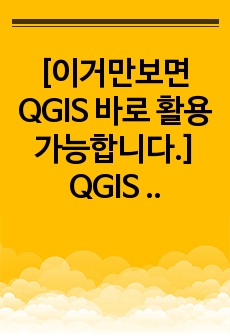EXPLORING THE AESTHETIC FACTOR ON WEARABLE FITNESS TECHNOLOGY ACCEPTANCE MODEL
* 본 문서는 배포용으로 복사 및 편집이 불가합니다.
서지정보
ㆍ발행기관 : 글로벌지식마케팅경영학회(GFMC)
ㆍ수록지정보 : GFMC Session1
ㆍ저자명 : Young-Seok Kim,, Mijung Kim
ㆍ저자명 : Young-Seok Kim,, Mijung Kim
영어 초록
Driven by the ability to interconnect with key modern trends of healthcare and fitness, wearable devices are attracting significant level of interest from sports industry marketers. Wearable devices are the new electronic technology equipped with sensors, internet connections, processors, and operating systems and used external to the body, either attached as an accessory or embedded in clothes (Li, Wu, Gao, & Shi, 2016; Raskovic, Martin, & Jovanov, 2004; Yang, Yu, Zo, & Choi, 2016). As fully functional, self-contained electronics, wearable devices allow users to access information measured anytime and anywhere. According to ABI Research (2016), the global wearable device shipments will increase from 202 million in 2016 to more than 501 million by 2021. Specifically, market reports show that wearable fitness trackers have dominated the consumer market for wearable devices by accounting 85% of the wearable technology market in 2016 (International Data Corporation, 2016). A wrist-worn type of wearable fitness devices is the most popular but chest worn type, apparel, and other types (e.g., clip-on, ear-worn, etc.) of wearable devices are also used for fitness tracking. Wearable fitness devices analyze accumulated data of the users’ physical activity as well as provide the health and fitness status in real time. Studies on behavior change through wearable technology showed that feedback based on accurate and insightful analysis could lead long-term use of wearable devices (Fritz, Huang, Murphy, & Zimmermann, 2014; Patel, Asch, & Volpp, 2015). In this regards, smart applications linked to wearable fitness devices are widely used. As electronics IT products and services are recognized as an instance of fashion objects, many studies on the user acceptance of the products and services have focused on the importance of product design and visual attractiveness (Cyr, Head, & Ivanov, 2006; Tzou & Lu, 2007). However, little research has been done on user acceptance and behaviors of wearable fitness devices and smart applications linked to the devices focusing on the effect of the design aesthetics. Thus, the current study seeks to better understand the relationship between design aesthetics and the extended technology acceptance model (TAM) including perceived usefulness, perceived ease of use, and perceived enjoyment. In addition, this study seeks to explore the synergistic effect of visual attractiveness of the smart applications linked to them on adoption process of wearable fitness devices and the related services. The definition of fashion is “a way of behaving that is temporarily adopted by a discernible proportion of members of a social group because that chosen behavior is perceived to be socially appropriate for the time and situation (Tzou & Lu, 2009, p. 312- 313).” A fashion object has some unique characteristics including styling, aesthetics, ego gratification, etc. and is perceived to be newer, more novel, more aesthetic or even more attractive than other choices (Tzou & Lu, 2009, p. 313). As iPhone and iWatch have changed the market trends of IT products and services, it is significant that consumer electronics products with visually attractive design are more likely dominate the market and consumers’ willingness to pay is high. As a fashion technology, the most popular type of wearable fitness devices is a bracelet that users can wear on their wrist. Users wear fitness devices 24/7 to track their physical activity to gain information for healthcare and fitness practice. Specifically, wearable fitness devices track physical activity, such as workout time and intensity, steps taken, calories burned, and even sleep patterns. By quantifying users’ behaviors, the devices can educate and motivate individuals to improve their health and fitness practices (Patel et al., 2015). Considering IT products as fashion technology, many studies on user acceptance of new technology show the importance of product design and attractiveness. Researchers found that the sensory experience of information technology as well as physical electronics products determined users’ perceived usefulness, perceived ease of use, and perceived enjoyment (Childers et al., 2001; Cyr et al., 2006; van der Hdijden, 2003). However, few studies have tested the effect of aesthetics factor on the wearable fitness device adoption process. Thus, this study defines design aesthetics as an aesthetic product design expressed through shapes, colors, and materials and user interfaces of wearable fitness devices (Yang et al., 2016) and examines the effect of design aesthetics on ergonomic conceptions such as perceived usefulness and ease of use and an emotional factor, perceived enjoyment. In addition, this study focuses on the synergistic effect of design aesthetics of a smart application linked to a wearable fitness device which can motivate use of the device by providing the users more insightful information. The devices collect users’ physical activity data 24/7 and transfer the data to a smart application linked to them, either through wireless Bluetooth syncing or plugging the device into users’ smartphone or PC. Then, the application provides useful feedback by informing the users their goals, progress, and the results of activity. Visual attractiveness of a wearable device defined by Yang et al. (2016) included an aesthetic product design expressed through the wearable device as well as through mobile applications linked to the device. However, the function and presentation of a wearable device itself and a smart application linked to the device are different. Simply, the wearable device is a hardware and the smart application is a software. To fully understand the role of a wearable fitness device which is physically presented on users’ body and a smart application linked to the device which requires more information visualization, this study examines the effects of design aesthetics of a wearable fitness device and the smart application linked to the device separately on the model of wearable fitness device and service acceptance. Introduced by Davis (1989), the TAM provides a framework for understanding the likelihood that individuals will adopt a new technology. The TAM postulates that two key factors predict a technological acceptance: perceived usefulness and perceived ease of use. Defined as “the degree to which a person believes that using a particular system would enhance his or her performance (Davis, 1989, p. 320)”, perceived usefulness describes the value users believe they could find in a wearable fitness device. Meanwhile, perceived ease of use is “the degree to which a person believes that using a particular system would be free of effort (Davis, 1989, p. 320).” According to the model, perceived usefulness and perceived ease of use combined to develop behavioral intentions which in turn lead to the adoption of a technology (Davis, Warshaw, & Bagozzi, 1992, p. 660). Regarding IT products and services adoption, researchers consistently found the positive relationship between perceived usefulness and behavioral intention to adopt a new form of technology. Zaremohzzabieh et al. (2015) found a positive relationship between perceived usefulness and behavioral intention to adopt a new form of information communication technology. Lunney, Cunningham, and Eastin (2016) examined factors affecting the adoption of wearable fitness trackers found that perceived usefulness was the key factor that influenced attitude and use. Furthermore, perceived ease of use was a direct determinant of usage behavior. Researchers have agreed that perceived ease of use also a key determinant of intention to use technology (Bhattacheijee & Hikmet, 2008; Lunney et al., 2016; Tzou & Lu, 2009; van der Heijden, 2003). In addition to the original TAM model, researchers have enhanced the model by including a hedonic component of enjoyment in the adoption of IT products and services (Childers, Carr, & Carson, 2001; Cyr et al., 2006; Dabholkar & Bagozzi, 2002). Davis et al. (1992) included perceived enjoyment in TAM defining it as “the extent to which the activity of using the computer is perceived to be enjoyable in its own right, apart from any performance consequences that may be anticipated (p.1113).” Researchers found the positive relationship between perceived enjoyment and use of technology (Cyr et al., 2006; Teo, Lim, & Lai, 1999; van der Heijden, 2003).This study investigates the antecedents, moderator and consequences of wearable fitness device and service acceptance considering them as fashion technology. With empirical analysis, the results will provide interesting insights and suggestions. First, findings will show the effect of design aesthetics on ergonomic conceptions (i.e., perceived usefulness and perceived ease of use) and an emotional factor (i.e., perceived enjoyment). This indicates that IT products are not purely results of engineering advances but be recognized as an instance of fashion objects (Tzou & Lu, 2009). Second, this study focuses on the synergistic effect of design aesthetics of smart application linked to a wearable fitness device which can motivate use of the device by providing the users more insightful information. Findings in the analysis of the effect of design aesthetics of the application and its adoption will provide deeper understanding on users’ wearable fitness device adoption by indicating overall service jointly influences users’ behavior. This study will provide useful insights and evidences to sports marketing managers how consumers make choices, how manufacturers should design services as well as hardware parts in the future.참고 자료
없음"GFMC Session1"의 다른 논문
 FAST AND SLOW FASHION BRANDS IN DEVELOPING SUSTAINABLE ..6페이지
FAST AND SLOW FASHION BRANDS IN DEVELOPING SUSTAINABLE ..6페이지 “WHAT IF A CELEBRITY AND A BRAND CO-CREATE A NEW COLLEC..7페이지
“WHAT IF A CELEBRITY AND A BRAND CO-CREATE A NEW COLLEC..7페이지 THE INSTAGRAM’S STRATEGY IN ENGAGING THE CUSTOMER’S LOY..3페이지
THE INSTAGRAM’S STRATEGY IN ENGAGING THE CUSTOMER’S LOY..3페이지 THE PARTICULARITIES OF NEW PRODUCT DEVELOPMENT IN THE T..5페이지
THE PARTICULARITIES OF NEW PRODUCT DEVELOPMENT IN THE T..5페이지 THE LONE CHOCOLATE BAR: THE INFLUENCE OF PERCEIVED SCAR..6페이지
THE LONE CHOCOLATE BAR: THE INFLUENCE OF PERCEIVED SCAR..6페이지 ADS AS WORKS OF ART: MEASURING ADVERTISING IMMERSION3페이지
ADS AS WORKS OF ART: MEASURING ADVERTISING IMMERSION3페이지 ECONOMIES OF SMALL: NICHE STRATEGIES AND SUCCESS FACTOR..8페이지
ECONOMIES OF SMALL: NICHE STRATEGIES AND SUCCESS FACTOR..8페이지 THE INFLUENCE OF ONLINE CUSTOMER REVIEWS ON RETAILERS' ..6페이지
THE INFLUENCE OF ONLINE CUSTOMER REVIEWS ON RETAILERS' ..6페이지 IS THE ARTIFICATION PROCESS PERCEIVED BY FINAL CONSUMER..6페이지
IS THE ARTIFICATION PROCESS PERCEIVED BY FINAL CONSUMER..6페이지 THE ODD EVEN PRICE PARADOX IN THE FASHION LUXURY SECTOR6페이지
THE ODD EVEN PRICE PARADOX IN THE FASHION LUXURY SECTOR6페이지

























